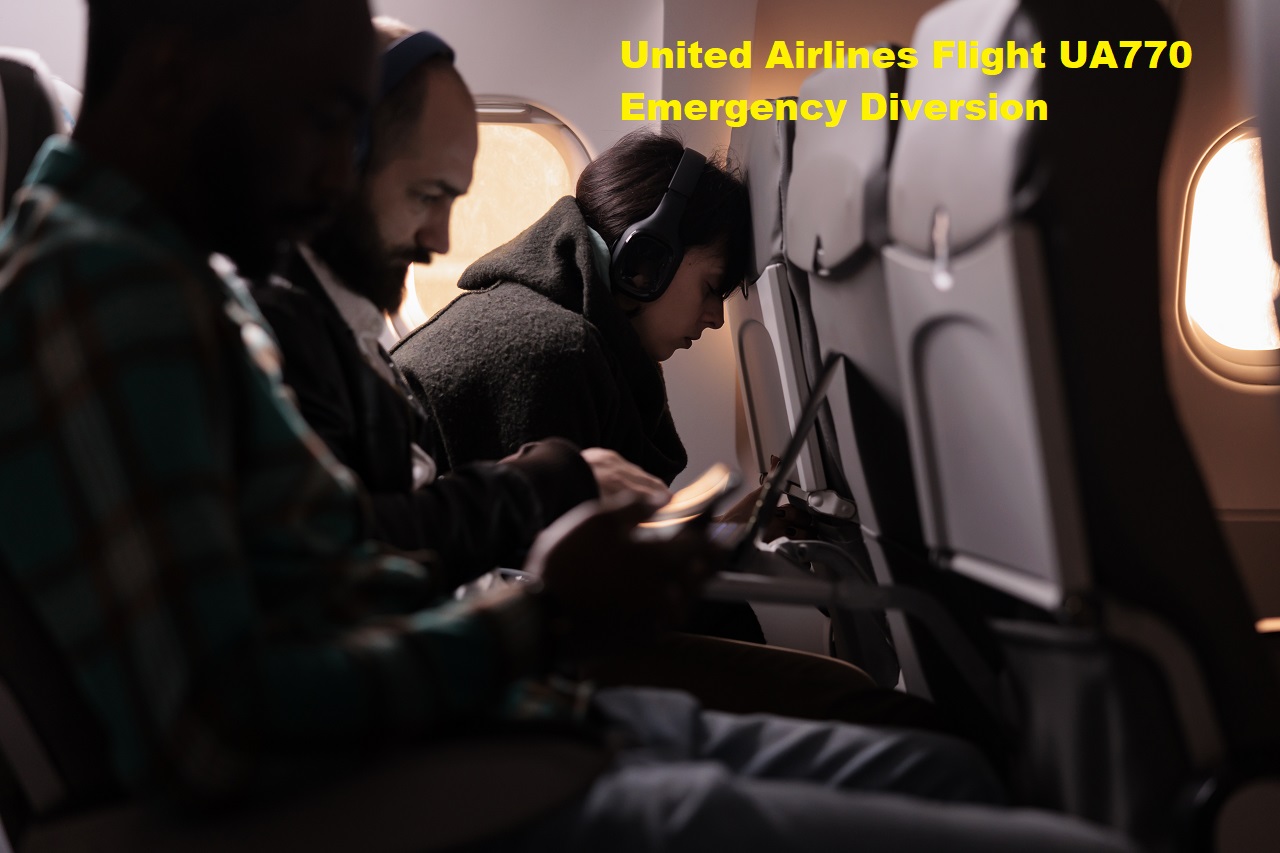On May 27, 2025, United Airlines Flight UA770 Emergency Diversion, a Boeing 787-9 Dreamliner en route from Barcelona to Chicago, declared a mid-flight emergency and diverted to London Heathrow Airport (LHR). Here’s a detailed breakdown of what happened, how safety protocols unfolded, and the lessons this event brings to aviation safety.
What Triggered the Emergency Diversion?
Mid-flight, while cruising over Western Europe, the UA770 crew detected a cabin pressurization anomaly—a serious issue that demands prompt action. The pilots responded swiftly by triggering “Squawk 7700”, the universal in-flight emergency code.
Why London Heathrow Was the Savest Choice
The flight crew selected Heathrow due to its proximity and status as a major aviation hub with robust infrastructure for emergency situations. Equipped for wide-body aircraft and surrounded by ample support services, Heathrow ensured a safe response. UA770 safely landed on Runway 27R before being guided to Gate B44 for inspection.
Onboard Calm: How Crew Support Kept Passengers Safe
Passengers reported a tense, yet orderly, environment aboard UA770. The cabin crew’s calm communication and steady demeanor were crucial in mitigating anxiety. Their professional approach, providing frequent updates, helped maintain composure throughout the descent and landing.
Shore-Side Support: What Happened Next
Upon deplaning, United Airlines activated its emergency protocols. Passengers received rebooking assistance, meal vouchers, and accommodation options when needed. Meanwhile, technical teams initiated thorough inspections to assess and address the cause of the pressurization issue.
Broader Implications: Safety in Practice
The UA770 incident highlights several strengths of modern aviation safety:
-
Early detection: Advanced monitoring systems caught the anomaly early.
-
Timely action: The crew promptly declared an emergency and diverted.
-
Strategic airport selection: Heathrow’s support infrastructure enabled a smooth diversion.
-
Effective protocols: Coordination between crew, ground staff, and airline operations ensured minimal disruption.
This event underscores how preparedness, training, and technology work together to turn potential emergencies into controlled outcomes.
Quick Summary Table
| Aspect | Details |
|---|---|
| Flight Route | Barcelona → Chicago |
| Aircraft | Boeing 787-9 Dreamliner |
| Emergency Trigger | Cabin pressurization anomaly |
| Emergency Code Used | Squawk 7700 (general emergency) |
| Diversion Airport | London Heathrow (LHR) |
| Landing | Runway 27R, then to Gate B44 |
| Crew & Passenger Handling | Calm communication, rebooking, accommodations provided |
| Key Lessons | Technological readiness, emergency protocols, crisis communication |
FAQs: United Flight UA770 Emergency Diversion
Q1: What caused the UA770 diversion?
A cabin pressurization issue triggered the diversion to Heathrow.
Q2: What does “Squawk 7700” mean?
It’s the general emergency code used to alert air traffic control of a critical in-flight situation.
Q3: Was the landing safe?
Yes—the crew executed a safe landing with no injuries reported.
Q4: How were passengers supported afterward?
They were quickly assisted with rebookings, meals, and accommodations by United Airlines
Q5: Why is this incident significant?
It showcases aviation’s layered safety protocol—from detection to crew training to ground preparedness.
Final Takeaway
United Airlines Flight UA770 emergency diversion exemplifies how modern aviation maintains safety—even amid unexpected challenges. Thanks to advanced detection tools, trained crew, and well-structured protocols, what could have been a crisis became a case study in effective emergency response.
By reinforcing trust through transparency and preparedness, the industry continues to exemplify resilience in air travel.
For More Visit: Jquerypost.com
